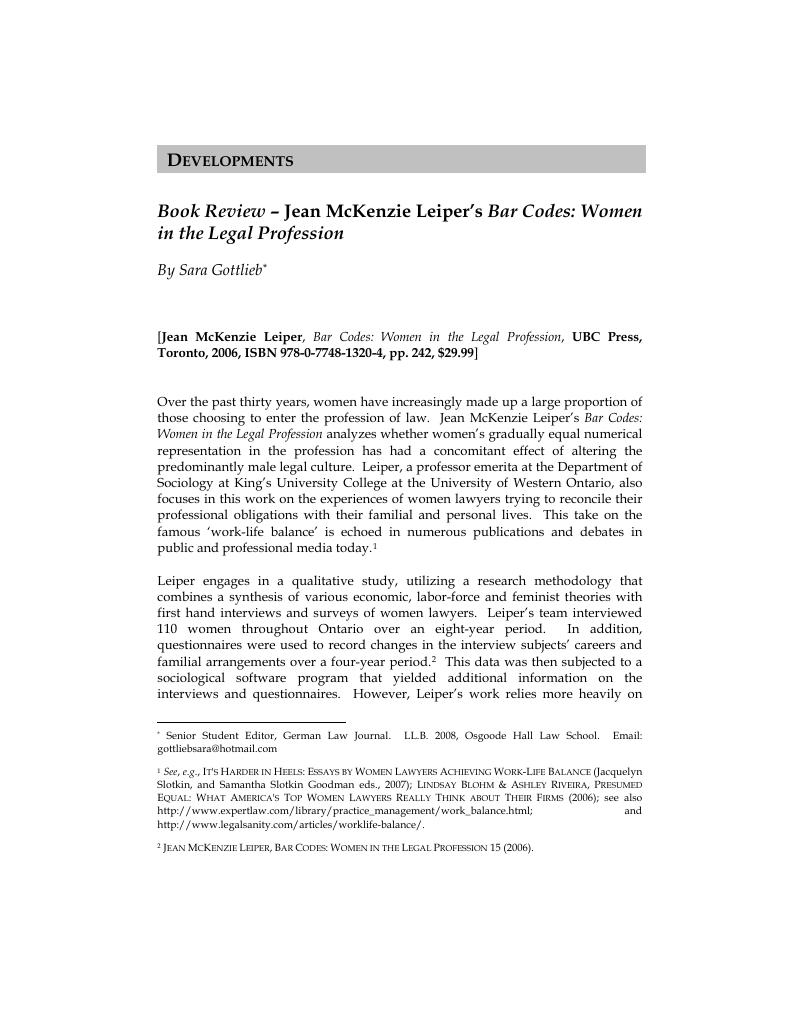No CrossRef data available.
Published online by Cambridge University Press: 06 March 2019

1 See, e.g., It's Harder in Heels: Essays by Women Lawyers Achieving Work-Life Balance (Jacquelyn Slotkin, and Samantha Slotkin Goodman eds., 2007); Lindsay Blohm & Ashley Riveira, Presumed Equal: What America's Top Women Lawyers Really Think about Their Firms (2006); see also http://www.expertlaw.com/library/practice_management/work_balance.html; and http://www.legalsanity.com/articles/worklife-balance/.Google Scholar
2 Jean McKenzie Leiper, Bar Codes: Women in the Legal Profession 15 (2006).Google Scholar
3 Id. Google Scholar
4 Id. at 18.Google Scholar
5 Id. at 28.Google Scholar
6 Id. at 79.Google Scholar
7 Id. at 102.Google Scholar
8 Id. at 10.Google Scholar
9 Id. at 141.Google Scholar
10 Id. at 142.Google Scholar
11 Id. at 174.Google Scholar
12 See, e.g., Nancy F. Cott, The Grounding of Modern Feminism (1987).Google Scholar
13 Leiper, supra note 2, at 29.Google Scholar
14 Id. at 37.Google Scholar
15 Canada Act 1982 (U.K.) 1982, c. 11, enacted as Schedule B: Canadian Charter of Rights and Freedoms, sec. 15 Equality Rights. Prohibits discrimination on the basis of sex, including pregnancy.Google Scholar
16 For examples of predominant issues shaping women's experiences in law, see Patricia Hill Collins, Black Feminist Thought: Knowledge, Consciousness and the Politics of Empowerment (1990).Google Scholar
17 Leiper, supra note 2, at 77.Google Scholar
18 Id. at 177.Google Scholar
19 Id. at 77 and 188.Google Scholar
20 See supra note 1.Google Scholar
21 Leiper, supra note 2, at 177.Google Scholar
22 Id. at 179.Google Scholar